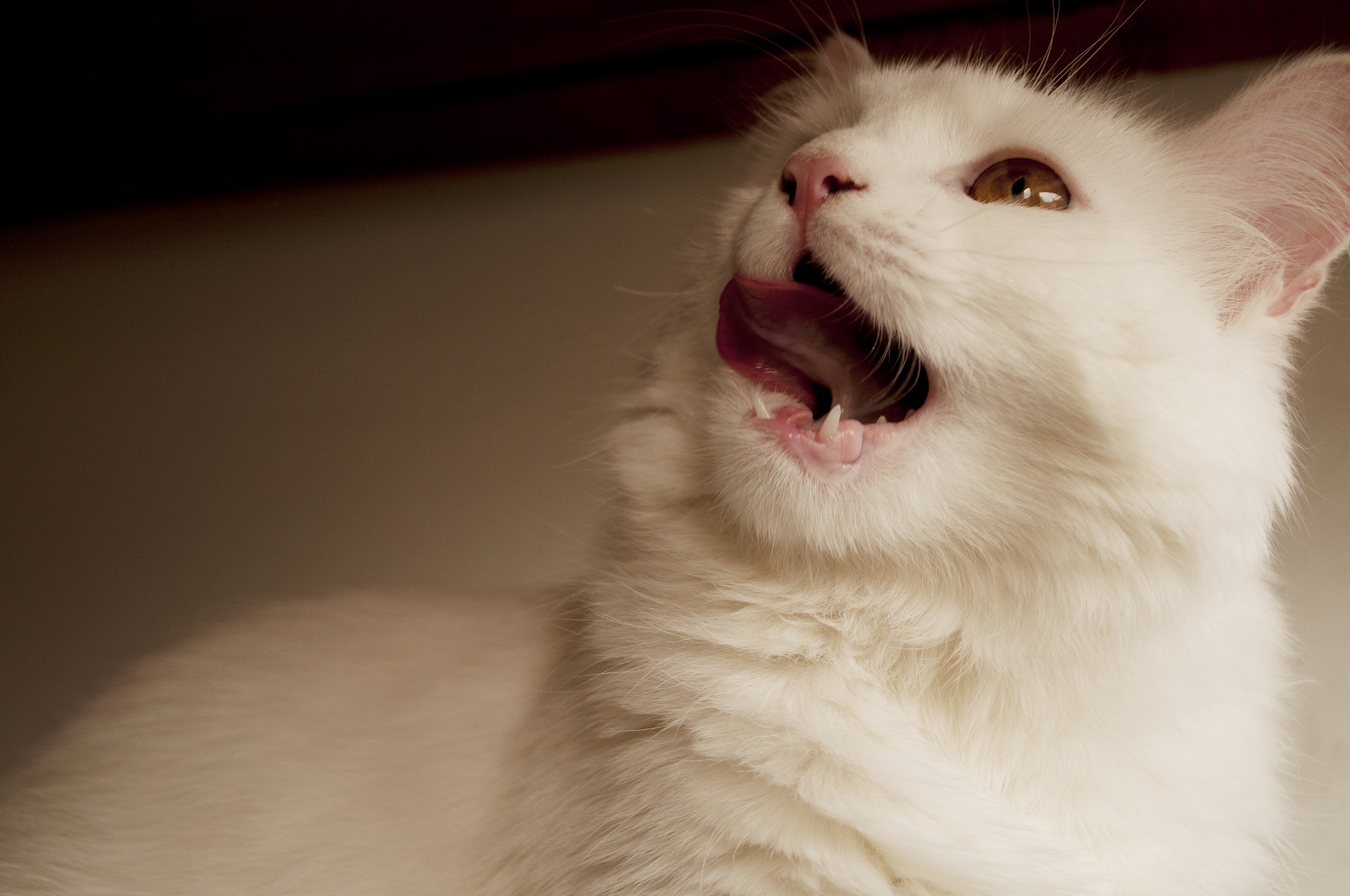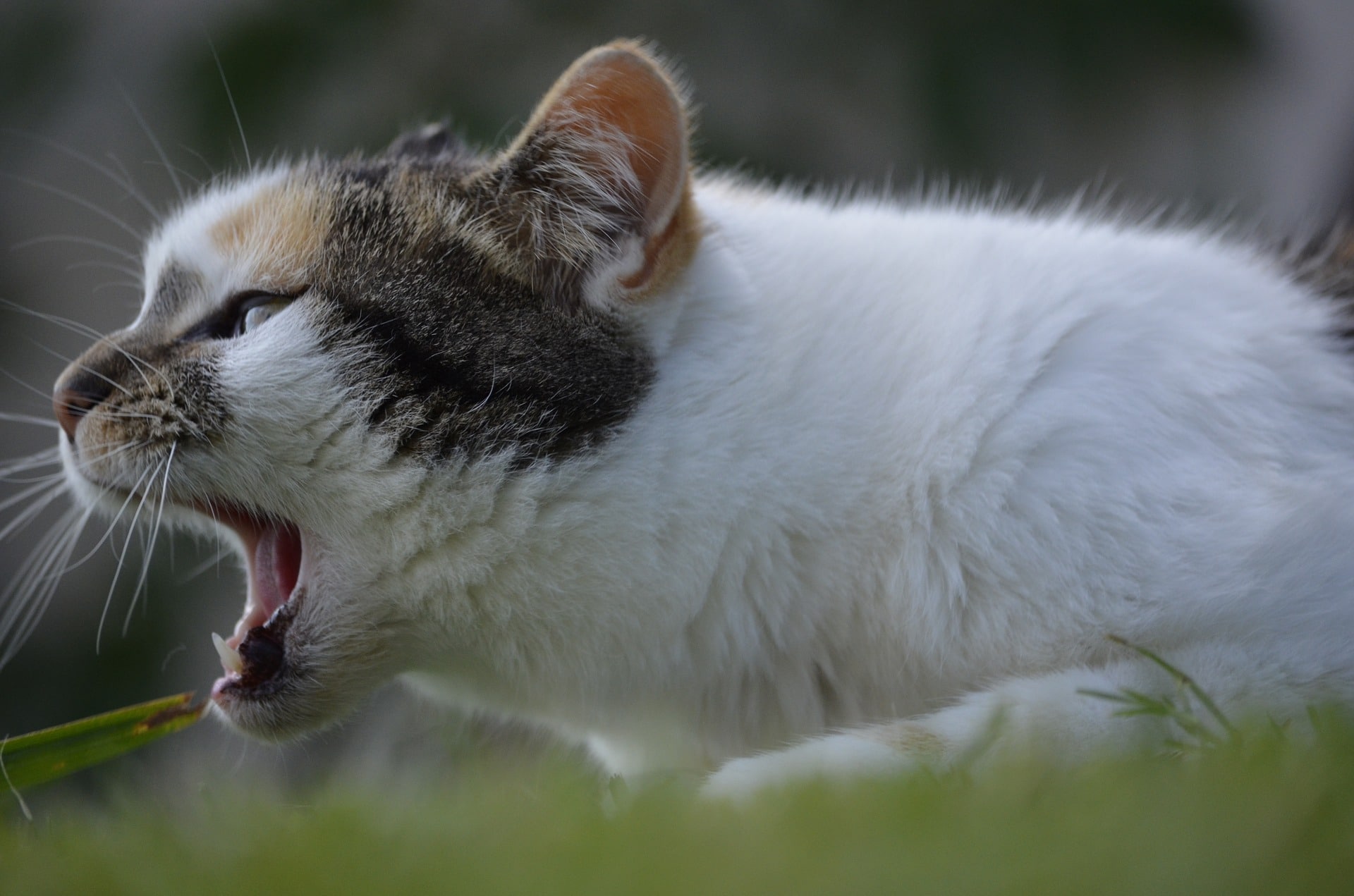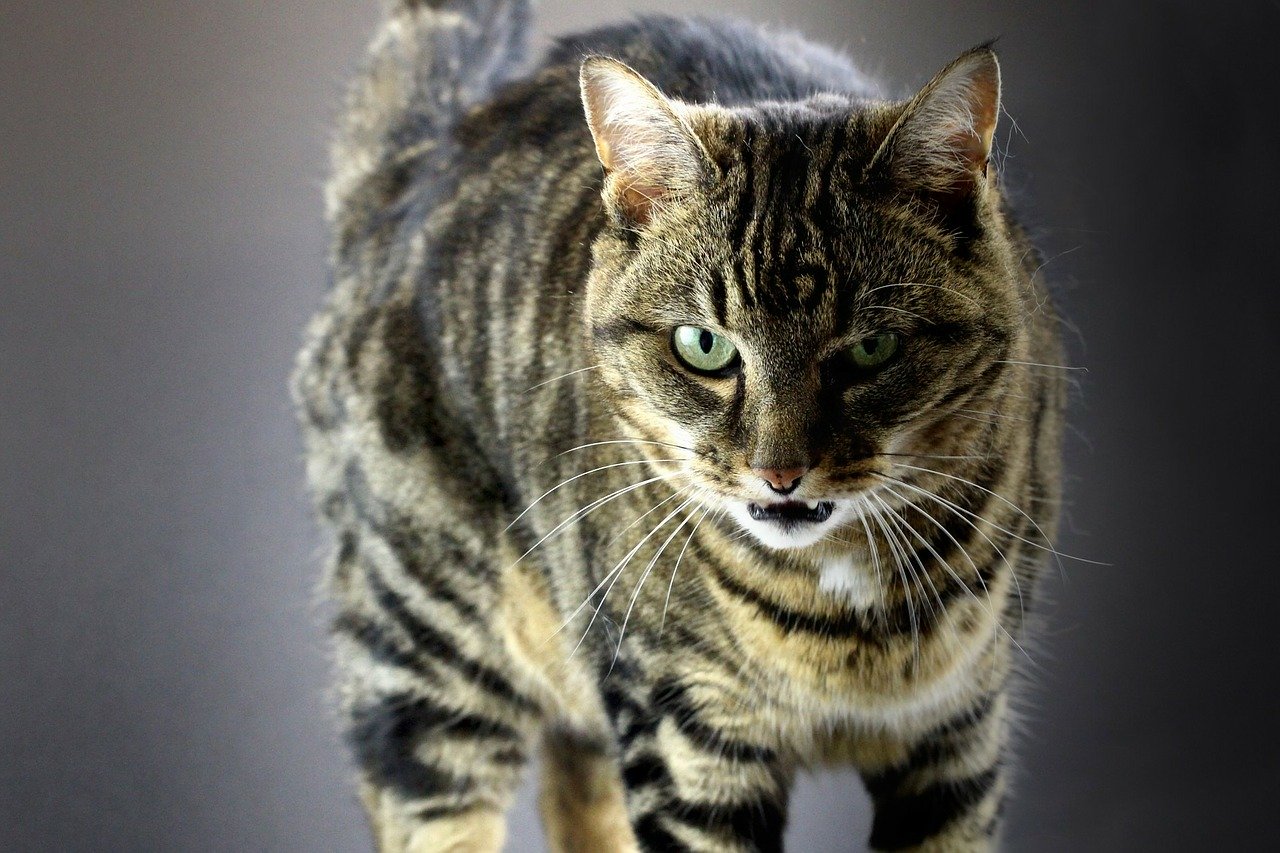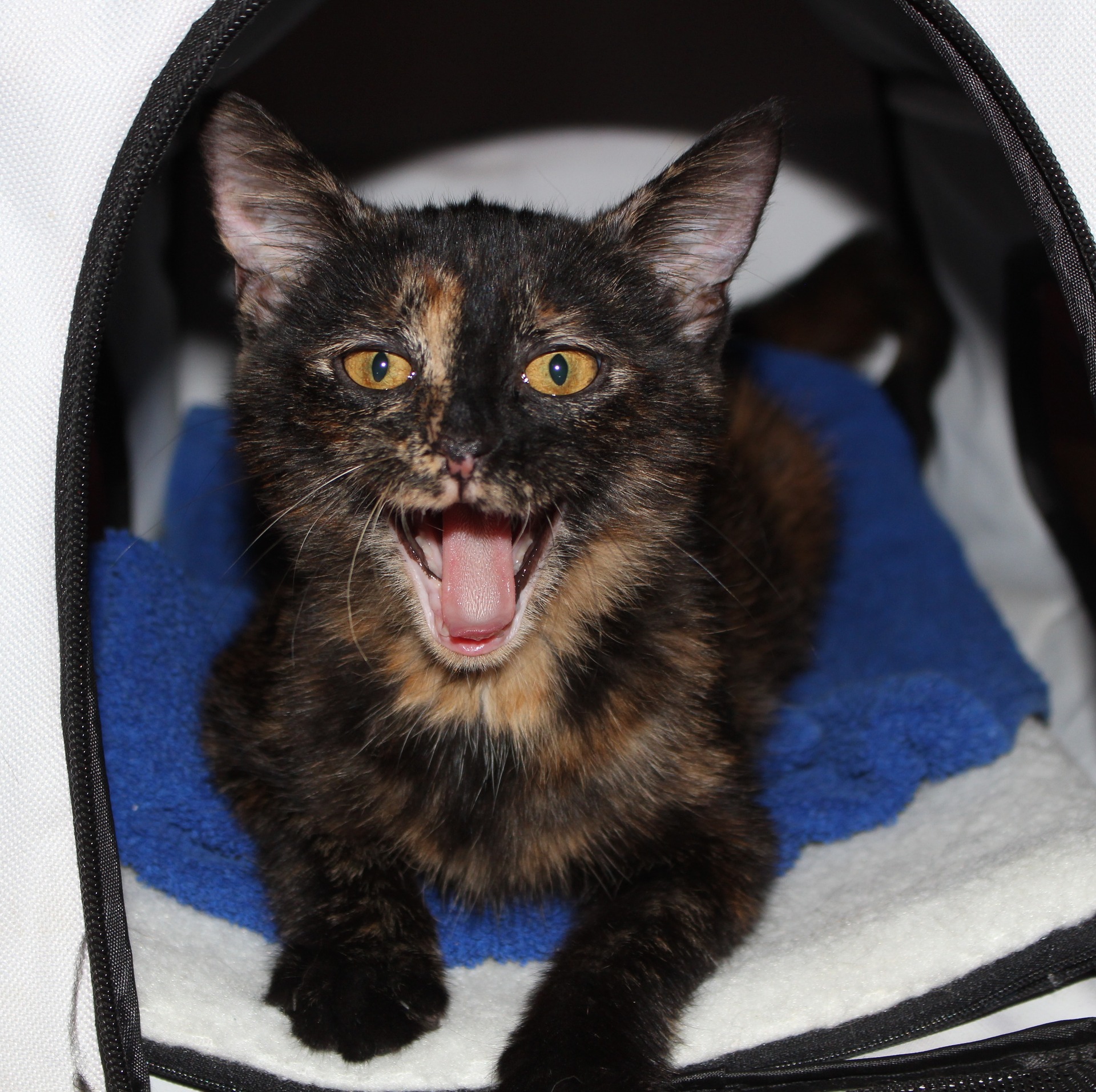
It is rare for a cat to choke, as it is very picky about food, so the risk that it will end up eating small things that cause choking is very low. But not non-existent. You always have to be vigilant and avoid leaving objects within reach that, due to their characteristics, would be interesting to play and / or bite on and that could end up swallowing.
What to do if our furry has problems? As much as possible, try to stay calm. If we get very nervous, the animal will become even more stressed, which is not recommended. Let's know what to do if my cat chokes.
How do I know if my cat is drowning?
The cat can sometimes make noises that pretend to be choking but are not. Therefore, to be sure that you have really choked, you must observe one or more of these symptoms:
- Trouble breathing: makes an exaggerated movement with the body trying to inhale air. The mouth remains open, with the tongue sticking out.
- Persistent cough- The cat is desperately trying to expel what is causing problems by repeatedly coughing.
- Drooling: When trying to expel the foreign object, or the food that he should not have eaten, he begins to drool excessively.
- Touches his mouth with his paw: in order to expel what should not be in your throat.
What to look at quickly
In addition to the above, you should consider the following before taking any action:
- You have a cough or gagging
- You have anxiety or panic
- Have trouble breathing
- Faints or loses consciousness
- Have bad breath
- You lack appetite
- Is apathetic
What to do to help you?
If the furry is drowning you have to act fast, following these steps:
- We will wrap the animal with a towel, leaving the head exposed.
- Afterwards, we will tilt his head slightly back so that we can open his mouth.
- If we see the object with the naked eye, we will remove it with tweezers.
In the event that the object is not visible, do the following:
- We will place the cat on the ground, in front of us but in the opposite direction.
- We will lift the hind legs and hold them between the knees.
- We will place a hand on both sides of the cat's chest and press it to compress it making erratic movements. We should not use a lot of force, otherwise we could break the ribs.
- We will press four to five times in order for the furry to cough.
What do I do if my cat is unconscious?
If the animal is unconscious you have to act differently:
- The first thing is to open his mouth, as much as possible.
- If we see the object, we will remove it with tweezers.
- We will remove the fluids with a clean cloth, and we will place him in a position where his head is below the heart so that he can expel the fluids.
- When the airways are clear, we perform artificial respiration using the mouth-to-nose technique.
When we have finally been able to remove the object, or if we are having many problems removing it, we must go to the vet immediately.
Choking and the Heimlich maneuver in cats

Technically, the suffocation when something gets caught in the larynx or windpipe, preventing air flow. This can be almost anything, even a small object like a cap, button, or thimble. Fortunately, suffocation does not usually occur in cats, although when it does occur it is normal for owners to be very scared.
Primary causes
The parts of cat toys, such as small pompoms or bells, chipped pieces of bone and other foreign objects can get caught in the larynx and cause suffocation.
Immediate care
If your cat is conscious and not too upset, you can try searching his mouth for any foreign objects. Delete it if you can, but in most cases you probably won't be able to do it safely. However, if your cat is too upset for safe handling, wrap him in a towel or put him in a carrier for transport to the vet.
If your cat is unconscious and is not breathing, or is breathing with great difficulty, and you cannot remove the object, try the Heimlich maneuver:
- Lay the cat on its side.
- Put one hand on his back.
- Place your other hand on her belly, just below her ribs.
- With your hand on your belly, give several sharp thrusts in and up.
- Check your mouth for foreign objects and remove them, then close your mouth and breathe gently through your nose.
- Repeat these steps until you are sure there are no foreign objects present in the airway.
If the cat is still not breathing after the foreign object was removed, check for a heartbeat or pulse. If you can't find it, start CPR and / or artificial respiration as needed and take your cat to the vet immediately.
A note on strings: If you find string (string, tinsel, etc.) in your cat's mouth, the temptation is to pull it out. Unless it slides like a wet spaghetti noodle, DO NOT. It's likely stuck somewhere inside and pulling will only make things worse.
At the vet
When you are at the vet, the professional will make a diagnosis of what happens to the cat and also an appropriate treatment for each case.
Diagnosis
The diagnosis will be based on your cat's examination and your description of what happened. X-rays of the head, neck, and chest may be needed to locate the foreign object. Sedation may be required for the exam and x-rays.
Transmission
Your cat will most likely be sedated or anesthetized to remove the foreign object. Removal can be as simple as removing it from your mouth, or it may require complicated neck surgery.. The foreign object can cause damage that may require stitches or antibiotics, especially if the object has been lodged for a while.
After the treatment
Once the foreign object has been removed, healing generally continues without problems. If there was severe damage to the object, or if surgery was required, laryngeal paralysis is a possible complication. Scarring can cause stenosis (narrowing of a passage), which can make it difficult to breathe or swallow.
If your cat was without oxygen for an extended period of time, that could also cause problems, usually neurological in nature, such as blindness or mental dullness.
Prevention
As with young children, be aware of possible suffocation hazards in your cat's environment. Also, something labeled as a cat toy is not necessarily safe for your cat, especially after he has chewed on it.
Artificial respiration for a choking cat
If the cat's heart is not beating, continue CPR. If it's beating, give artificial respiration.
- Put your cat on its side
- Extends the head and neck. Keep the cat's mouth and lips closed and blow firmly into its nostrils. Give one breath every three to five seconds. Repeat until you feel resistance or see the chest rise.
- After ten seconds, stop. Observe the movement of the chest to indicate that the cat is breathing on its own.
If the cat is still not breathing, continue artificial respiration.
Transport the cat to the vet immediately and continue artificial respiration on the way to the vet or until the cat is breathing unaided.
Cardiopulmonary resuscitation for a cat
If the cat's heart is not beating, perform cardiopulmonary resuscitation (CPR).
- Put the cat on its side
- Kneel on the cat's head
- Hold the chest so that the cat's sternum rests in the palm of your hand, your thumb on one side of the chest, and your fingers on the other. Your thumb and fingers should fall in the middle of the chest.
Compress the chest by firmly squeezing your thumb and fingers. Strive for 100 to 160 compressions per minute.
Alternatively (after 30 seconds), keep the cat's mouth and lips closed and blow firmly into its nostrils. Blow for three seconds, take a deep breath, and repeat until you feel resistance or see the chest rise. Repeat this 10 to 20 times per minute.
After a minute, stop. Look at the chest for respiratory movements and feel the cat's heartbeat placing your fingers about an inch behind the cat's elbow and in the center of its chest.
If the cat's heart is still not beating, continue CPR. If the heart begins to beat, but the cat is still not breathing, return with artificial respiration.
Take the cat to the vet immediately.


Hi, I'm TSU Pecuario and I have some notion about handling small pets. I have a 5-year-old adult cat who has had discomfort lately, I do not know if it is a thorn in the throat or an upset stomach, he swallows constantly like when a cat or dog feels nauseous, and sometimes his stomach returns after coughing forcefully (vomiting cough) always I recognize her, but I don't know if she has a thorn in her throat, stuck in a place where she vomits or if she merely has an upset stomach, yesterday she ate but I think she was vomiting, she has an appetite and the last time I saw him vomit alone It was stomach fluid, I felt it to see if it was obstruction but I did not get anything in the intestines
Hello Mayra.
If you haven't done it yet, you should take him to the vet as soon as possible.
Only he can tell you what your cat has, and what you should do to improve it.
I'm not a veterinarian, and I can't tell you what she has. But I hope it improves.
Greetings.